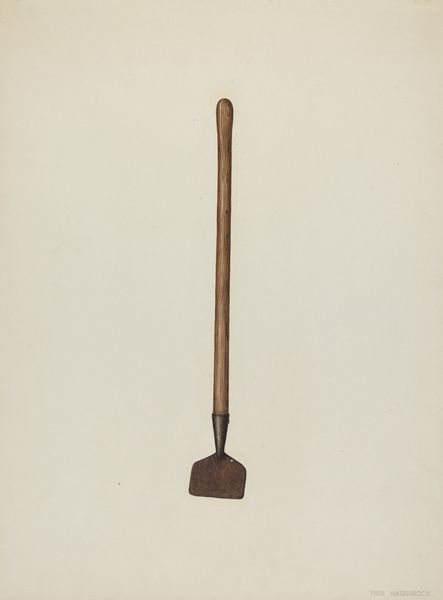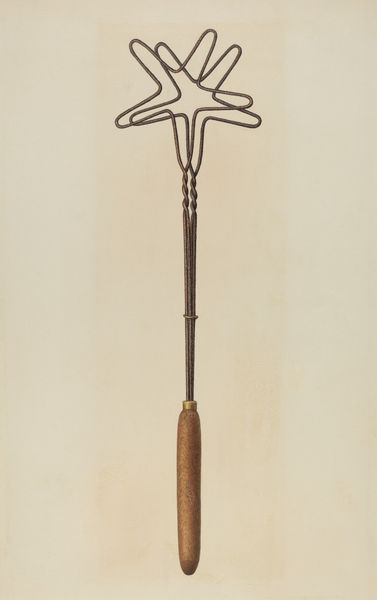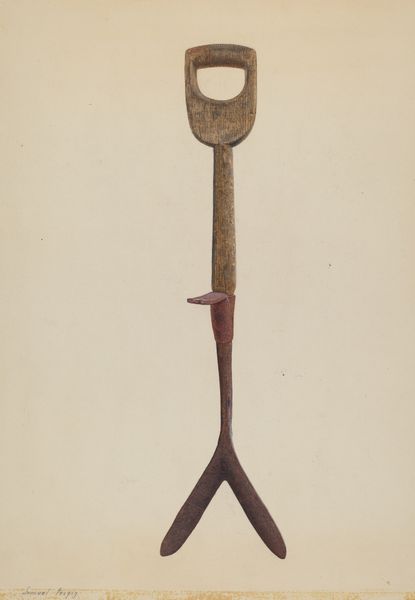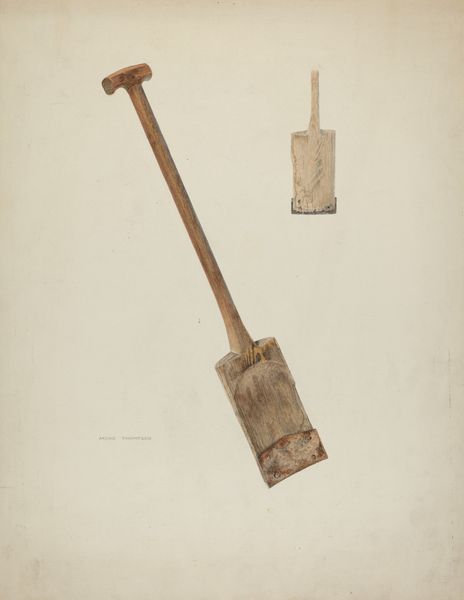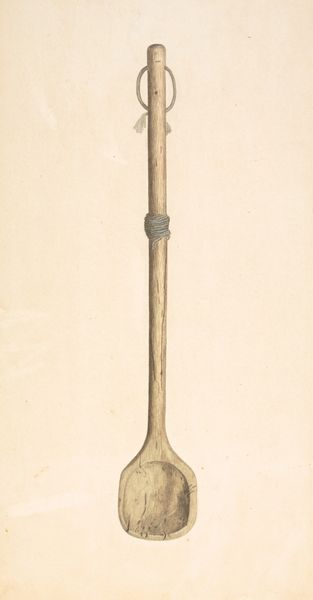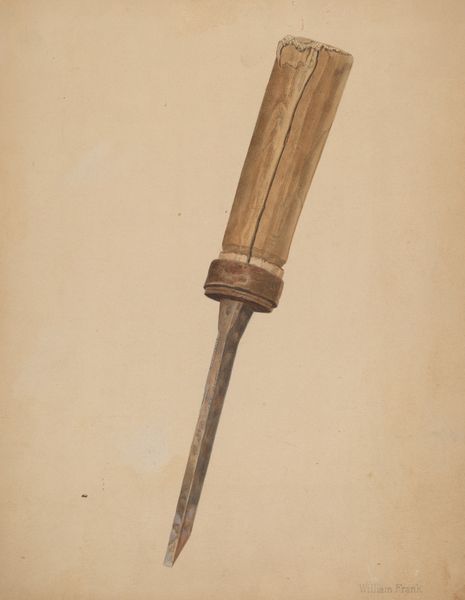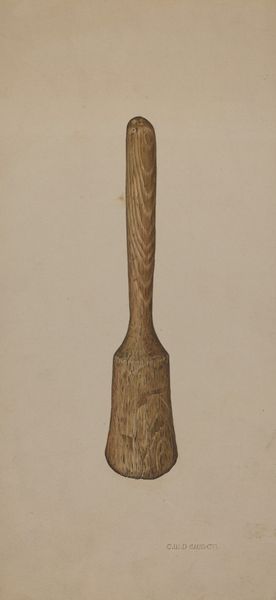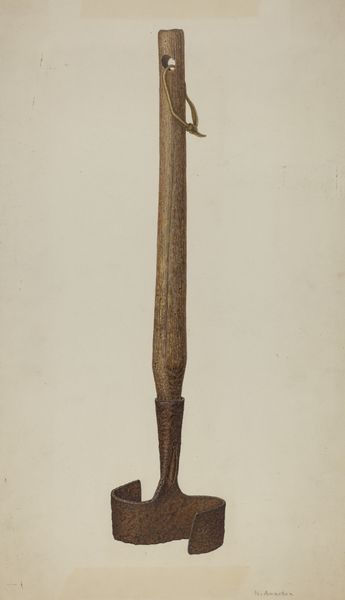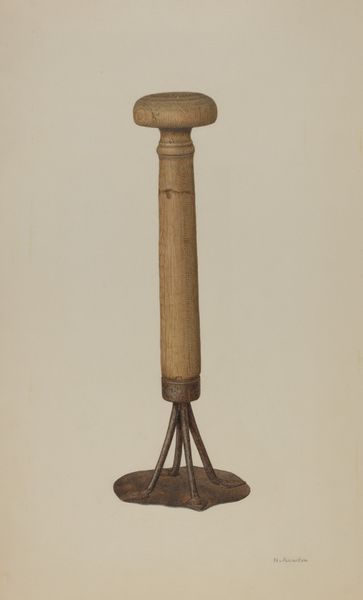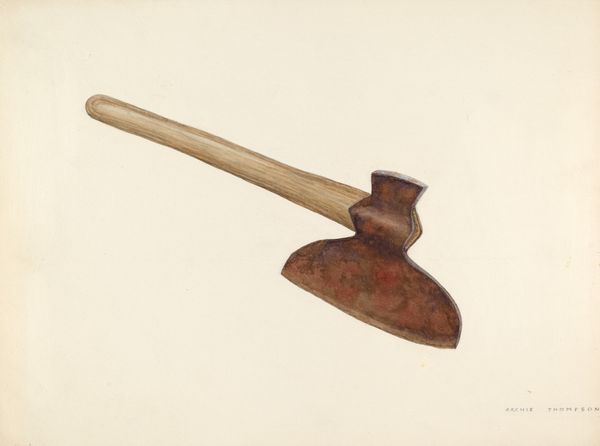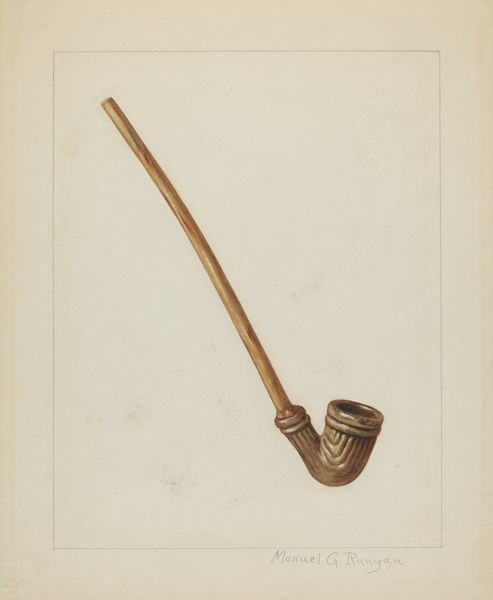
drawing, watercolor
#
drawing
#
watercolor
#
watercolour illustration
#
watercolor
#
realism
Dimensions: overall: 35.7 x 28 cm (14 1/16 x 11 in.) Original IAD Object: Blade and Butt: 15" long; blade: 10" wode; butt: 1 1/4" in diameter; handle: 7" long
Copyright: National Gallery of Art: CC0 1.0
Curator: What an unexpected painting subject. William Frank gives us "Chopping Knife," from around 1942, rendered in watercolor and drawing. I’m struck by the sheer ordinariness of it, its simple form rendered with such focused attention. Editor: Utilitarian elegance, perhaps? Immediately, I’m drawn to the materiality here: the rough, honest grain of the wooden handle meeting the worn, greyed metal of the blade. It’s almost brutal in its straightforwardness. This isn't a precious object; it’s a tool. Curator: Precisely! And yet, Frank invites us to *see* it. He coaxes out its inner presence, makes us consider its weight, its balance, and, yes, its story. I mean, I wonder about the hands that have gripped that handle, the surfaces it’s hammered upon. What history is embedded in this mundane object? Editor: That patina, the visible wear, hints at the hands and labor involved, absolutely. Someone made this tool, likely worked it hard, and then Frank immortalized it in paint. We're seeing a convergence of making here, industrial process meeting artistic interpretation, highlighting class and everyday use. Curator: And even deeper than that, I think it also hints at home, and the sustenance that could be made thanks to this knife. Perhaps it reminds the artist of safety and stability during turbulent times. And look how lovingly rendered it is. You could almost reach out and touch the wood, feel the cold, gritty texture of the metal. Frank's almost giving soul to something soulless. Editor: It's also important to acknowledge the choices made in the presentation of the piece. A neutral background forces a concentration on this implement. What could the social or political background of 1942 brought into this perspective of ordinary subjects? What exactly did William Frank mean by portraying a chopping knife and turning it into a piece of fine art? It challenges traditional fine art expectations. Curator: It asks us, I think, to redefine our notions of beauty and value. To find the extraordinary in the ordinary, to see art not just in grand landscapes or portraits, but in the everyday tools that shape our lives. Perhaps the story can vary depending on everyone who finds the time to gaze at the illustration. Editor: In that way, Frank has opened the door to further examination and discussion of value within our society and its influence within art as well. Thanks for pointing all of that out!
Comments
No comments
Be the first to comment and join the conversation on the ultimate creative platform.
